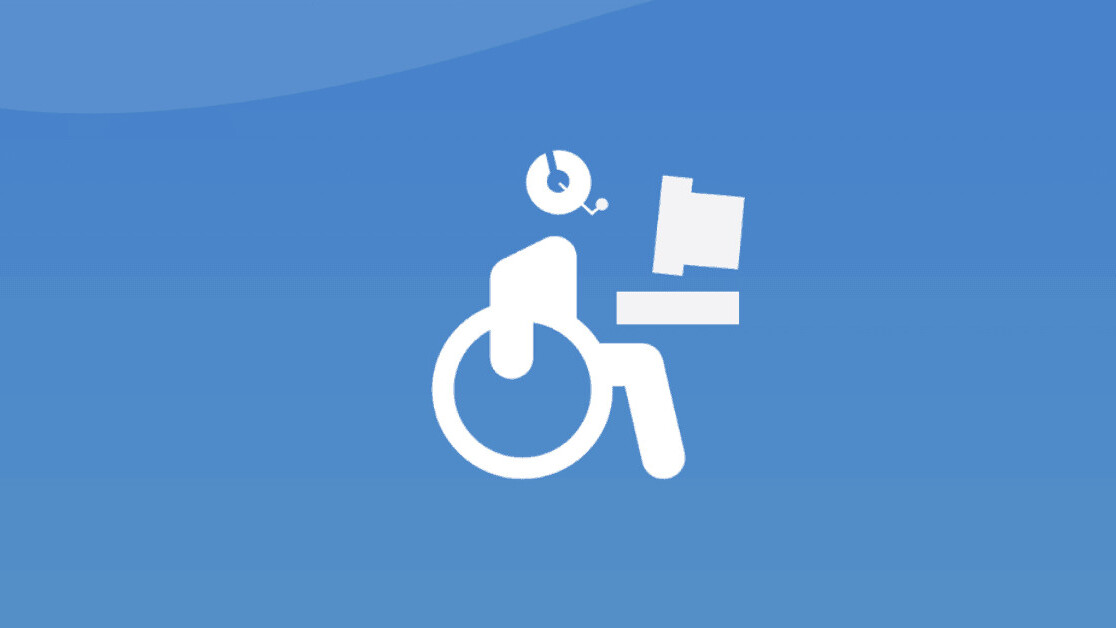In a time where a million different worthy causes are vying for our attention online, it’s impressive to note that World Wildlife Fund of Canada recently pulled off one of its most successful fundraisers of all time, bringing in over $21 million in revenue for the year.
How did they do it? Not through a big marketing push, or a campaign tugging at the heartstrings of existing donors. They simply improved the accessibility of their website.
Some updated tags on the backend, and a new mobile-friendly design, and suddenly, the “Donate Now” button was blowing up — along with the checkout for the WWF’s online store.
The internet is known as the great equalizer, democratizing access to information for the masses, but a major blind spot for web designers and online businesses — especially retailers — has been creating websites and online stores that are accessible to people with disabilities.
If you stop to think about it, ignoring accessibility on the web is a serious oversight, especially in a climate where designing for inclusivity and diversity in other realms is a hot topic.
No retailer in their right mind would build a brick-and-mortar store that wasn’t accessible to people with mobility concerns, and yet the online world can be hazardous for the 15 percent of the world’s population living with disabilities.
For example, hearing-impaired users may have trouble with uncaptioned videos, people with vision loss often struggle to read delicate typefaces or light-colored text, and those with dyslexia can have difficulty navigating websites without a site map.
New legislation in Canada and the U.S. will soon subject businesses that don’t comply with accessibility standards to fines and penalties, but there’s a another reason to make your website user-friendly — for everyone: It’s one of the simplest ways to boost business.
An untapped market
Beyond the fact that people with disabilities deserve the same access to information and opportunities as everyone else, this oft-ignored demographic comes with a lot of purchasing power. Ignoring it is tantamount to leaving money on the table.
Nearly 60 million Americans live with some sort of disability, a number that will only grow as Baby Boomers, a.k.a. “the wealthiest generation in history”, continue to age and encounter more hearing, vision, mobility and cognitive challenges.
Excluding that many potential customers makes no sense for a business, especially retailers. If people can’t find your products, or figure out how to check out, you’re cheating yourself out of sales.
And the inverse is equally true: sites that prioritize accessibility enjoy some of the strongest user rates — and profits — around. Translation: designing for accessibility generally makes for a better experience for all users, a difference that shows up in the bottom line.
For example, Amazon’s value of $777 billion is rests in part on its extremely user-friendly site that’s about as utilitarian as they come. It’s not exactly winning design awards, but that doesn’t matter when you’ve won over 40 percent of U.S. market share, and counting.
Not only can designing for accessibility get more customers through your checkout, it can also draw them to your site in the first place.
Search engines are built to favor sites that are built with accessibility in mind — that means tagging all your images with alt text, having well defined structure title tags and creating a clear hierarchy of information on the backend, and updating your code for compliance with the most current accessibility tools.
Keeping these principles in mind can improve vastly improve your visibility to all users. Ebay, for example labels all of its product images explicitly so that the site is easy to use for visually impaired people who depend on text-to-voice programs to understand what images are on the page.
The added benefit is that those pictures of consumer goods — along with links to the site — also appear high up in product searches by the general public.
Putting accessibility on the radar
Incorporating accessibility into your store doesn’t mean you have to go the for a bare-bones Amazon aesthetic.
As the founder of an e-commerce agency that strives to create beautiful and functional online stores, I believe accessibility and eye-catching design can coexist — in fact, marrying the two is the mark of a good design team. But for too many designers, and their clients, the issue isn’t even on the radar.
But it’s up to us to start spearheading the change. Once you start to peel away the idea that your personal experience with the web is a universal one, you begin to appreciate, and appeal to, the variety of different users that are out there, with different needs and limitations.
The Web Accessibility Initiative has developed a handy checklist my team and I reference to make sure designs are compliant with existing legislation. Beyond that, we’ve started to broach the subject with clients and help them understand the benefits of designing for diverse users from the beginning.
We’re definitely not perfect at it — everyone has their biases and shortcomings — but something as simple as considering colors and contrast, or making sure the copy is written at a high school reading level can open up your site to a significant portion of the population.
The same goes for ensuring sites work well across all devices: for instance mobile sites often require bigger text to be visible for aging users — or anyone who’s sick of squinting into their phone.
It might sound complicated or costly, but in actuality considering accessibility from the outset of the design process adds little in the way of time or cost, and has the potential to increase the value of a site exponentially, for businesses and their customers.
As we continue to consider and discuss best practices for inclusion and diversity in other areas of society, it’s only a matter of time until all eyes turn to how this issue plays out online. Will your business be ready?
Get the TNW newsletter
Get the most important tech news in your inbox each week.






